#showy evening primrose
Text



Pink evening primrose (Oenothera speciosa)
#nature#nature photography#macro#macro photography#macrophotography#nature macro#up close#up close photography#close up#close up photography#flower#flower photography#flowery#floral#pink flower#Oenothera speciosa#bee#insect#beetle#pink evening primrose#Showy evening primrose#Flowers#photographer on tumblr#original photography#original photographers#original photography on tumblr#Photography
59 notes
·
View notes
Photo

ヒルザキツキミソウ(5月4日)
#Oenothera speciosa#pinkladies#pink evening primrose#showy evening primrose#Mexican primrose#amapola#buttercups#flowers#kwiaty#japan
6 notes
·
View notes
Text

giving my back a bit of a rest today as it did not appreciate the lugging of dirt yesterday but still, there are buttercups
#showy evening primrose to be precise#but i grew up calling them buttercups#higgledypiggledygardentag
12 notes
·
View notes
Text
My Oenothera biennis at home is covered in caterpillars of white-lined sphinx moth. I've never seen one before! I think the caterpillars hibernate underground over the winter and emerge in spring as their adult moth form?
O. biennis is common evening-primrose. It has such a special place in my heart. It was, I believe, the first rescued plant that bloomed for me—I pulled one from a crack in the pavement on the roadside, not knowing what it was, and carefully took care of it until it had grown too big for its pot, at which point I planted it in the front flower bed.
I remember how amazing it was to watch the plant develop pointed buds that opened into large, bright, delicate flowers that were the most gorgeous shade of glowing pale yellow. It was so unlike the rich, heavy, buttery yellows of dandelions and sunflowers and other yellow flowers I was familiar with—this plant had its own yellow, so gentle yet so luminous, almost fluorescent. Each day, a new set of buds formed and opened, beginning late July and continuing into the final days of September.
At last, the plant reached the end of its bright, showy riot of blossoms, and slowly dried up entirely, leaving an array of partially split open seed pods along the stem. O. biennis is biennial, as the name suggests. It germinates the first year, forms a rosette of leaves close to the ground, then the second year, it bolts—rapidly growing its stem upward—and produces tons and tons of flowers until it is utterly spent. As the plant dries out in death, the seed pods slowly curl open, releasing loads of tiny seeds.
The next spring, a strange miracle occurred: Many O. biennis sprouts came up where the seeds had fallen, but instead of creating a neat little rosette of leaves on the ground, they began bolting immediately.
One particularly enthusiastic sprout was already a foot tall by May, and kept growing and growing, to my perplexment. "You're supposed to be biennial! What are you doing?"
But it couldn't be denied—the plants were all preparing to bloom the same year they'd first sprouted. And bloom they did!


The flower bed by the front door was blazing with color.
I saw how people designated O. biennis as a weed—it wasn't compact like the usual garden plants, it grew tall and sprawling like an expansive candelabra of blossoms. It was strong and enthusiastic in spite of poor conditions. But it was so beautiful, I was in love.
I learned that occasionally, O. biennis growing in harsh conditions with low competition, could evolve to have an annual life cycle. Apparently, all the seeds produced by the founding plant inherited this trait.
Yesterday, I visited home and collected seed pods from the one extraordinarily enthusiastic plant that had captured my attention, the one that bolted in spring and began blooming before all the others. I intend to spread those seeds in the goldenrod fields and whatever neglected place a tough plant might thrive.
I feel that the progeny of my one extraordinary plant might be more competitive in areas that are periodically subjected to mowing and bush-hogging. The plants these seeds give rise to could be better adapted to the novel stresses placed upon them in these disturbed environments.
The weakness of O. biennis is that it spreads its seeds simply by gravity and the action of water washing seeds away. Its genetics, however exceptional, cannot travel far. So I am helping it out a little bit, by identifying a plant that has evolved exceptionally well for the stresses of a roadside environment and spreading its seeds as much as I can.
570 notes
·
View notes
Text
My Garden Flowers Part 3
All photos mine. The small buttercup and evening primrose are edited for colour since the camera didn't catch it and washed it out.
In order of appearance:
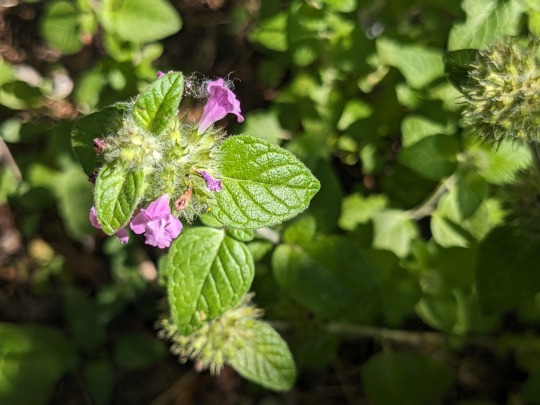
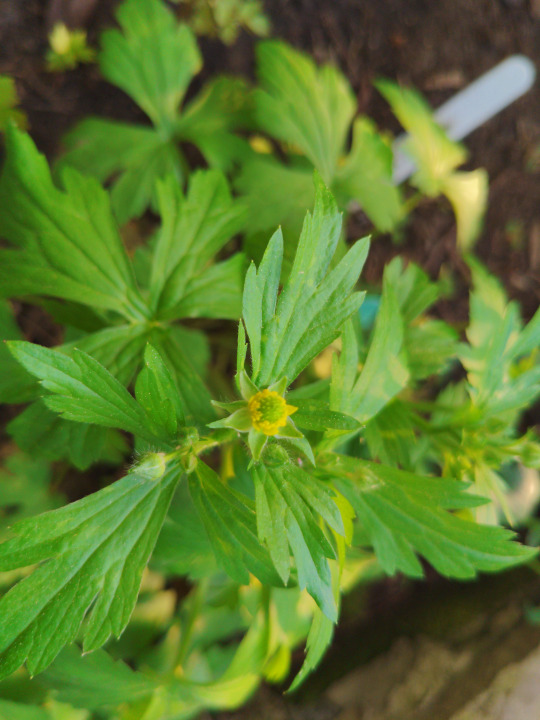


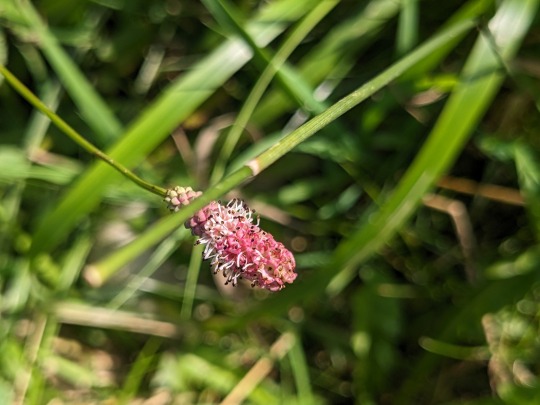
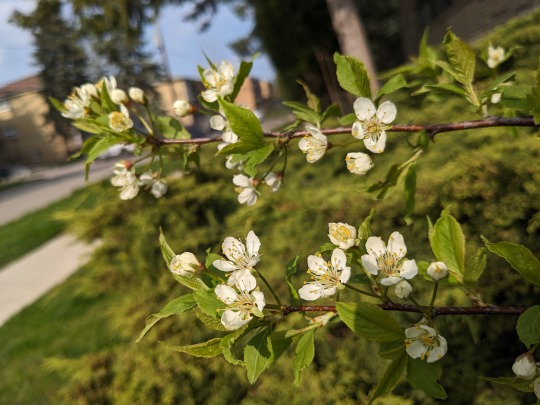

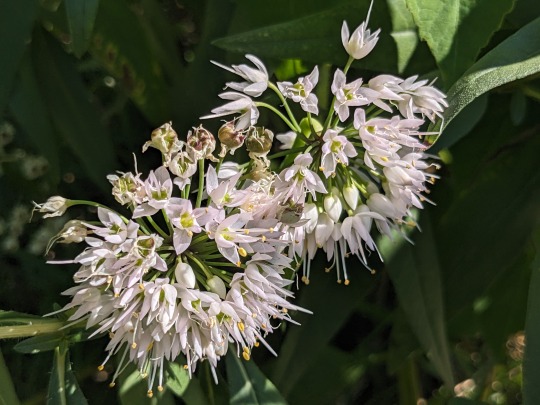
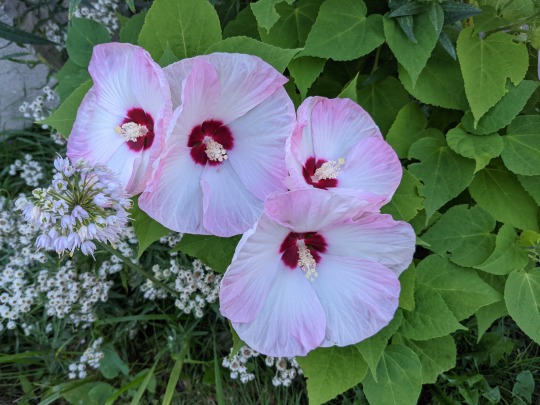

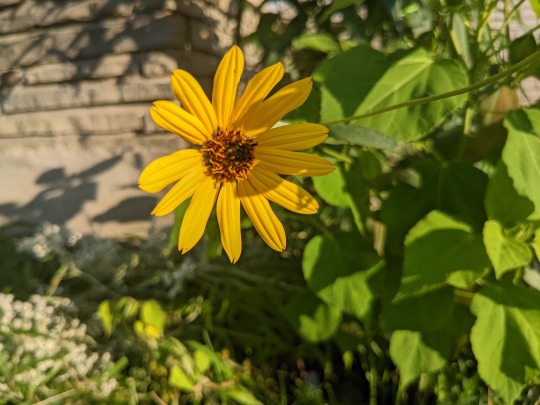

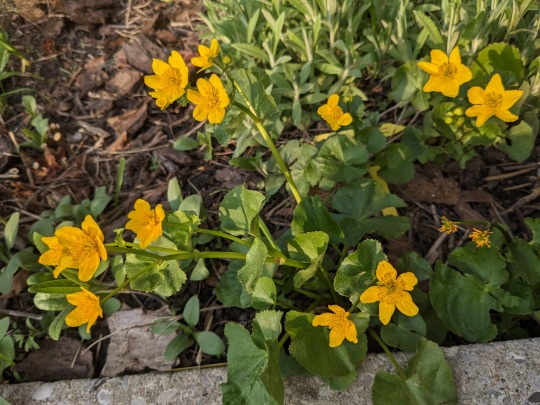


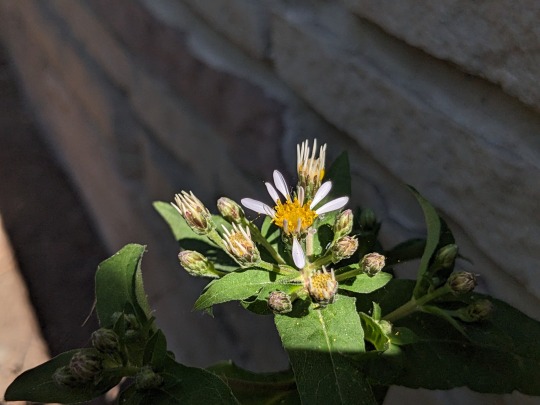

In order of appearance:
061. Wild Basil (Clinopodium vulgare) Didn't do so well the last place I had her in, but she seems happy in this spot, so fingers crossed.
062. Crested Iris (Iris cristata) Not pictured as she hasn't flowered yet.
063. Smallflower Buttercup (Rancunculus abortivus) Not much to look at compared with other buttercups but one of the only native buttercups with (limited) edible uses.
064. Smooth Solomon's Seal (Polygonatum biflorum) Not pictured as she hasn't flowered yet. Soon, hopefully!
065. False Solomon's Seal (Maianthemum racemosa) Not pictured as she hasn't flowered yet, but she's growing well so hopefully next year.
066. Blisterwort (Ranunculus recurvatus) I didn't plant that. She just turned up last year. Not pictured as I haven't got any pictures yet.
067. Fairy Spuds (Claytonia virginica) Not pictured as she hasn't flowered yet. She's a wee little spud in the ground.
068. Flowering Dogwood (Cornus floridus) Not pictured as she hasn't flowered yet but she is slowly spreading out.
069. Plantain-Leaf Sedge (Carex plantaginea) Not pictured as I haven't got pictures yet. I should. It's a neat plant. Evergreen, too!
070. Virginia Bluebells (Mertensia virginica) One of the prettiest plants I've ever seen, from the shape and texture of the leaves to the purplish pink buds to the bright blue bell-shaped flowers. They're spring ephemerals, though, so they're long gone by now. But will emerge next spring!
071. Evening Primrose (Oenothera biennis) Only lives for two years and reseeds itself. It's a common weed along sidewalks, but its flowers glow yellow in the evening and often remain in bloom at night.
072. Squirrel Corn (Dicentra canadensis) Not pictured as she hasn't flowered yet. The leaves are really cute, though.
073. Large Toothwort (Cardamine maxima) Not pictured as she hasn't flowered yet.
074. Wintergreen (Gaultheria procumbens) Not pictured as I haven't got any pictures yet.
075. Great Burnet (Sanguisorba officinalis) A cultivar, not sure which one. I'll get the wild type if/when I can.
076. American Plum (Prunus americana) I was not expecting her to flower this year! Hopefully she will next year too, and without aphids this time so I can have some plums. :)
077. Smooth Aster (Symphyotrichum laeve) So like I said, I do think New England asters are the prettiest of this genus, but smooth asters are very nice in their own way. Tender bluish leaves, and delicate light purple flowers.
078. Sweet Grass (Hierochloe odorata) Not pictured as I haven't got any pictures yet. She only flowered one year. Hasn't since. I won't miss a photo next time.
079. Nodding Onion (Allium cernuum) What's better than pretty flowers? Tasty pretty flowers!
080-081. Swamp Rose Mallow (Hibiscus moscheutos) Two different cultivars and the red one has died, but I did get my hands on the wild type! That will hopefully bloom this year.
082. Stiff Sunflower (Helianthus pauciflorus subrhomboideus) Holds her own against the much more aggressive Nuttall's sunflower. Sometimes called beautiful sunflower. I don't know how one decides which species of a very showy genus gets that name, but I guess she won out.
083. Pearly Everlasting (Anaphalis margaritacea) Another one that was hard to choose a photo of. You just hardly believe they're real!
084. Marsh Marigold (Caltha palustris) I planted her where there's a drip from the eavestrough so she can get very wet when it rains. :) She is not a marigold but instead part of the buttercup family.
085. Nuttall's Sunflower (Helianthus nuttallii) Whenever I am expressing frustration about sunflowers, it is almost always this species. lol Very beautiful but very aggressive.
086. Larkspur Violet (Viola pedatifida) Not pictured as she hasn't flowered yet.
087. White Turtlehead (Chelone glabra) Not pictured as she hasn't flowered yet.
088. Small Sundrops (Oenothera perennis) Not quite as intensely yellow as some of her relatives but still very bright.
089. Bigleaf Aster (Eurybia macrophylla) You generally grow her for foliage rather than her flowers, but flowering she is! Very drought-tolerant, but spreads more readily in less harsh conditions.
090. Bride's Feathers (Aruncus dioicus) Southern Ontario and surrounding area's evolution really went off on the lacy white flowers, and this species' flowers might be the laciest of them all.
#blackswallowtailbutterfly#my photos#photography#my garden#garden flowers#native plant gardening#native flowers of Carolinian Canada and USA#Viola sororia#Rancunculus abortivus#Mertensia virginica#Oenothera biennis#Sanguisorba officinalis#Prunus americana#Symphyotrichum laeve#Allium cernuum#Hibiscus moscheutos#Helianthus pauciflorus subrhomboideus#Anaphalis margaritacea#Caltha palustris#Helianthus nuttallii#Oenothera perennis#Aruncus dioicus
11 notes
·
View notes
Text
MIDWEST/EAST US: I have the following native flower (and one grass) seeds available for cost of shipping, all harvested from either my garden or from nearby parks in small amounts. if you're interested please kofi me here and shoot me a message with your address and what you'd like! amount/availability may vary but I would like to share as much as possible.
before requesting please make sure the seeds you want are native to your state! prairie moon has range maps for many of the species here; otherwise a quick search of the scientific name should let you know.
seeds I have:
-Cup plant (silphium perfoliatum)
-Common milkweed (asclepias syriaca)
-Swamp milkweed (asclepias incarnata)
-Honeyvine milkweed (cynanchum laeve)
-Maypop (passiflora incarnata)
-Bee balm (monarda fistulosa)
-Foxglove beardtongue (penstemon digitalis)
-Purple coneflower (echinacea purpurea)
-Missouri coneflower (rudbeckia missouriensis)
-Showy sunflower (helianthus pauciflorus)
-Cliff goldenrod (solidago drummondii)
-Meadow blazing star (liatris ligulistylis)
-Common evening primrose (oenothera biennis)
-Blue sage (salvia azurea)
-Little bluestem (schizachyrium scoparium)
-Blue mistflower (conoclinium coelestinum)
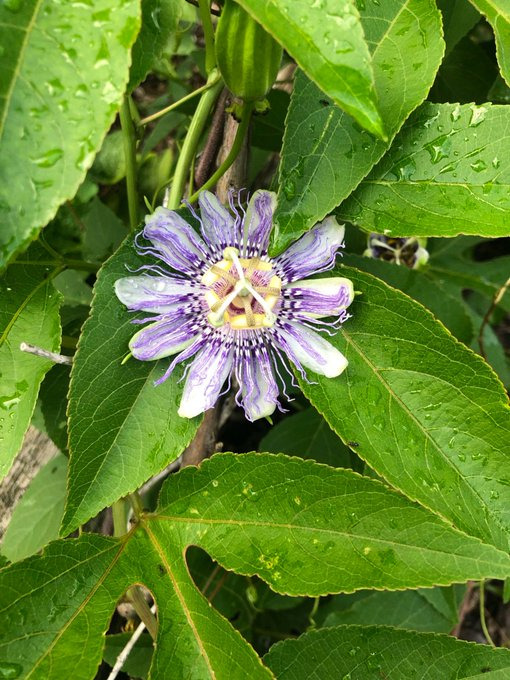

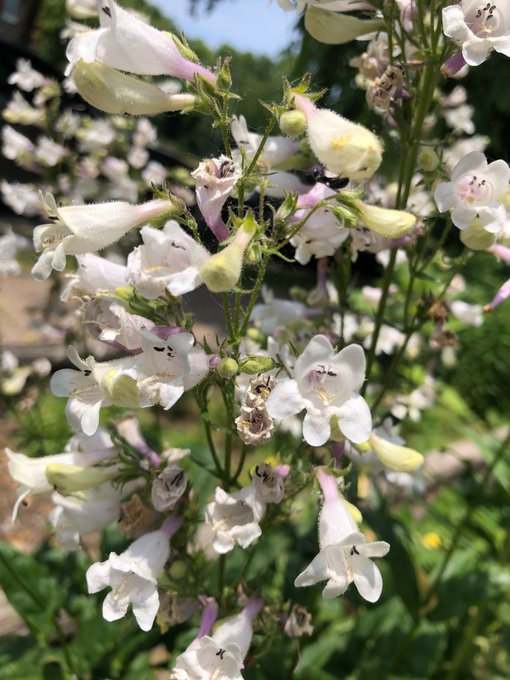

#plants#gardening#native plant gardening#native plants#flowers#prairie plants#free#maypop#sunflower#milkweed#insect gardening#bigeelsplantposting
13 notes
·
View notes
Text
Turns out, I didn't kill as much of my Hummingbird Oasis as I thought I did.
The 'John F. Kennedy' Rose is recovering now that the temperatures are dropping again, and has a tonne of fresh new growth on it. The 'Francis Dubreuil' Rose is still going strong and blooming regularly.
The 'Dakota Burgundy' Beardtongue (Penstemon hyb.) is still in its first year dormancy stage, and is bushy and green. I thought the 'Flock of Flamingos' Penstemon (Penstemon hyb.) was dead, but it has signs of some new green growth showing up at the base.
All of the Woodland Sages (Salvia Nemorosa) are coming back; the 'Rose Marvel' we bought to match my Mother in Law's unknown one- which both have the same compact, almost bushy growth styles. And then my 'Caradonna Pink Inspiration' and 'April Night', which both have the same long stemmed, more sweeping growth patterns.
The 'Angel Wings' Blacurrant Sage (Salvia Microphylla) is also alive, though it's starting to falter finally. And the Rosemary (Rosmarinus Officinalis / Salvia Rosmarinus), too. My 'Showy Pink' Evening Primrose (Oenothera Speciosus Rosea) is also still surviving somehow despite being in exactly the wrong kind of soil.
That means that so far, all in all, I've only actually lost the:
'Summer Breeze' Hummingbird Mint (Agastache hyb.)
'Coronado' Hummingbird Mint (Agastache Aurantiaca)
Tall Verbena (Verbena Bonariensis)
Scarlet Sage (Salvia Splendens)
'Peachy Pink' Scarlet Sage (Salvia Splendens Van Houttei)
'Hidcote' English Lavender (Lavandula Angustifolia)
the suspected Pot Marigold I initially found growing abandoned down by the pool.
My Rue (Ruta Graveolens)
I'm particularly sad about losing the Rue since I'd managed to overwinter it successfully for the first time ever. But that's ok. I have seeds- or somewhere to order a seedling from- for next year. I can always try again (and again, and again). That's one of the great things about gardening, honestly.
3 notes
·
View notes
Text

Pink ladies (Oenothera speciosa). Also known as pink evening primrose, showy evening primrose, and Mexican primrose.
25 notes
·
View notes
Text
Native wildflowers collection pt 2
Continued from part 1
Wild white indigo. These grow seed pods and then break off and tumbleweed around to spread their seeds.

Blazing star. There are several species of this and I think this one is prairie blazing star

Culver's root

Daisy fleabane. This was burned and the ashes were used as a flea remedy.

Joe Pye weed

Elderberry. You can chop up the branches of this, put them in the ground, and as long as there's enough water, they will grow into new bushes.

Wild petunia (left), wild geranium (right), and wild hyacinth (bottom). I like them more than the ornamental cultivars



Showy tick trefoil. These seeds are easy to collect. Walk through the prairie for a while and you'll have a few hundred stuck to your clothes.

Tall bellflower

Heal-all

New England aster or aromatic aster. I don't know how to tell them apart. Usually purple, but sometimes you find a bright pink one.


Evening primrose

Wild onion

American bush clover

Rose mallow (left) and halberd-leafed rose mallow (left). The latter gets smaller flowers and different shaped leaves.


Tall boneflower, which is a name I'm totally using for an undead plant in D&D

Great blue lobelia

Smartweed. These are absolutely tiny.

Spring beauty, a cute little spring ephemeral

Bloodroot. These are cool, they have giant rhizomes and bright red sap.

Wild violet. These are usually purple, but sometimes you find a yellow one

Trout lily.

Virginia bluebell

Trillium. You don't get as many of these around here as we'd like because the deer go absolutely wild for them

Woodland phlox

Wild hawthorn

Continued in part 3
#plants#native plants#wildflowers#native wildflowers#wild white indigo#blazing star#culver's root#daisy fleabane#petunia#geranium#hyacinth#tick trefoil#bellflower#heal all#asters#wild onion#primrose#rose mallow#boneflower#lobelia#smartweed#spring beauty#bloodroot#violets#trout lily#bluebells#trillium#phlox#hawthorn
2 notes
·
View notes
Text




Pinkladies
Oenothera speciosa is a species in the evening primrose family known by several common names, including pinkladies, pink evening primrose, showy evening primrose, Mexican primrose, and buttercups (not to be confused with true buttercups in the genus Ranunculus).
The flower throats, as well as the stigmas and stamens, have a soft yellow color. It blooms both day and night, but typically in the pre-dawn hours, closing when the full sun hits them. They bloom from March to July, and occasionally in the fall. The flowers are frequented by several insect species, but moths are the most common as the flowers are mostly open at night.
4 notes
·
View notes
Text
Garden of Eternity
[Touhou Ship Week Day 7: Free Day. Yuuka/Mokou, 1.1k words]
Mokou smelled the flowers long before she could peel her eyes open. It was cacophony in scent form that somehow managed to come together to form a striking perfume. She tried to recognise the scent of at least one individual flower in the mix with no success.
Once she was more awake, she discovered that what had been a grassy meadow when she had laid her head down had transformed into a garden. Instead of blades of grass and dandelions, she was resting on a blanket of sweet alyssum and surrounded by primroses and irises so violently violet they seemed more like purple flames than blossoms. Ahead, sunflower stalks rose towards their namesake, their flowers still raw and green.
She lay back down and admired the clusters of lilac blossoms swaying on the branches at the edge of her vision, their scent suddenly distinct and intoxicating now that she could see them. Had they been in bloom when she had last been awake? She couldn't remember. When had she fallen asleep, for that matter? All she knew was that she was more alive breathing in the sudden summer enshrouding than she had been for quite some time now.
The wind carried with it the sound of someone gently humming to themselves. Mokou listened for a while, her eyes still on the lilacs, then spoke without moving. "Did you mean to use me as a flowerbed?"
The tune tapered to silence. Yuuka's voice was as pleasant as ever and ringed from far closer than Mokou had guessed. "Of course not. Corpses make for far better fertiliser than live bodies."
Mokou was careful not to crush the sweet alyssum as she turned to her side to look at Yuuka. She was vaguely aware her new position was bad for her back — and the fact she noticed that was practically a miracle by itself. Either way, she chose to bear it. Her body would recover from anything she put it through one way or another, while the blossoms around her only had one chance.
The section of the meadow Yuuka knelt in was dotted with poppies as red as her dress. She looked at once like a flower herself, one which had only sprouted into existence alongside rest of the meadow's splendour, and like she was as permanent as the ground beneath them. She appeared to have already forgotten Mokou's presence as she tended to the flowers. Her smile as she cupped her hands around a struggling sunflower sapling was as gentle as a dewdrop on a rose petal. Mokou knew her well enough to be certain she would never bestow a look like that upon anything else in the world. Even witnessing it from the sidelines was another small miracle.
Still, she thought she had seen that exact smile once before. When had it been? She only seemed to run into Yuuka once in a century, but even that meant they had met at least...
She sat up and looked away before she blurted out the question that leapt to her tongue. It could wait. For now, she wished to savour the utter sense of calm in the garden for a moment longer.
Looking to her left, she saw the dandelions which had dominated the meadow before hadn't been eradicated: they continued to bloom alongside the poppies and more showy garden plants. They had been weeds, once, then becoming a blessing from the gods, then simply becoming something to grace the lands she wandered through regardless of what anyone else thought of them.
She stood and navigated carefully to where the patch of dandelions was at its thickest. She had expected to see insects once she got close enough to flowers, but she was still surprised to find a bumblebee crawling all over the largest of the dandelions, clearly savouring every moment as it gorged itself on its pollen and nectar. It wasn't alone, either: the longer Mokou stood in place, the greater the number of bumblebees buzzing around the flowers.
"I thought bumblebees were extinct."
She spoke the words to the wind, but Yuuka's ears had always been sharp. "Yes, I feared the same. But it seems they have recovered quite admirably."
Mokou left the bumblebees to their toil and began ambling towards Yuuka, keeping an eye out for more dandelions as she did so. She discovered several which had completed their bloom, their spherical clusters of cloudy seeds swaying in the wind as if begging to fly away.
She bent lower as she walked and snapped the stem of one of the dandelion clocks. It took her several blows to dislodge all of the seeds, but soon enough she got to watch as they floated towards where the sunlight was at its brightest and slowly scattered.
She turned to see Yuuka smiling at her. It was a different smile from the one she had given to the poppies — it was sharper, for one — but it seemed genuine enough.
Mokou placed her hands in her pockets as she studied Yuuka. Suddenly, the question which had attempted to escape from her earlier was simply in the air between them. "Do you ever feel old?"
Yuuka's eyes grew darker. Her smile didn't waver for a second. "At times, yes." She turned away to gaze at the garden and observed it for so long Mokou wasn't certain she ever meant to continue until she suddenly did. "The changing of the seasons keeps me feeling young. Why would I worry about the years on my shoulders when there are new blossoms blooming every single day?"
Mokou watched her in silence for a moment longer, then walked over to stand by her side. She swept her eyes across the flowers all around them, wondering all the while just how differently Yuuka saw them from her. "It's a good thing you relish change."
"Indeed. Still, there is something very delightful about a flower that blooms in all seasons."
Mokou brought her attention back to Yuuka and found herself to be the target of close scrutiny and a bright smile. It was not the smile she usually greeted people with, nor was it the one she reserved for flowers. It was stunning all the same, especially as it reached her eyes and lit them up like rubies.
Mokou extracted her hand from her pocket and held it out. Still smiling, Yuuka took it.
"So." Mokou faced the horizon. "Just how far does this garden stretch on?"
"Quite far. We could take a stroll through it if you happen to have the time."
Mokou flashed a smile at the sun and squeezed Yuuka's hand, breathing in a scent that seemed to contain the flowers of all seasons at once. "I still have all the time in the world."
11 notes
·
View notes
Text
Northwestern Pennsylvania and Ohio unknown showy natives
Today I am going to talk about some plants native to these regions that are less well known in terms gardening. I put these together as a guide for someone who wants to increase their amount of butterflies/other wildlife in their lawn without sacrificing showy flowers!
Wild Hyacinth

This plants can tolerate full sun or shady areas of a yard and like things to be a little moist!
2. Jack-in-the-Pulpit

These plants are a bit more moody, their dark color will make them a great native addition to any emo/witchy garden. These do well in more shaded and woody areas.
3. Bloodroot plant

These absolute cuties, though the flowers do not last for very long they still have interesting and showy leaves, and as the name suggests the roots can be used as a natural dye. They prefer shady well drained areas.
4. Sand Vine or Climbing Milkweed

Not showy in terms of flowers, but it is a great native substitute for the super invasive English ivy.
five. bottonbush
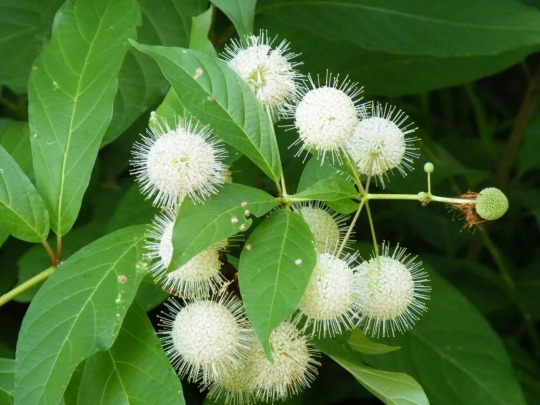
As the name states, this is a bush, but I love these ball flowers, they look like something out of a fairytale. They love swampy areas, but will tolerate and grow in drier areas.
6. Wild Geranium

This picture really says it all. It likes dry and partially shaded areas.
seven. Virginia Bluebells

These are so adorable! They are quoted for being very easy to grow and they really love shady areas!
8. Black Cohosh

These are very tall plants, and they look as though they are long bloomers, for all those reasons they may be the perfect addition to a garden/field. This plant also loves shady areas!
9. Obedient Plant
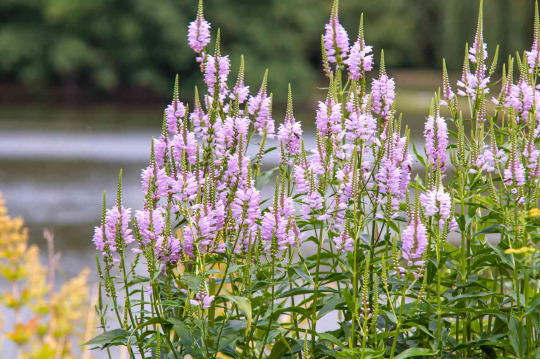
This would be a great plant to put in full sun fields, or to plant by ponds as shown in the above image, this is a fast spreading plant (but luckily it is native) so make sure you aren't putting this in an organized garden.
10. Turtlehead
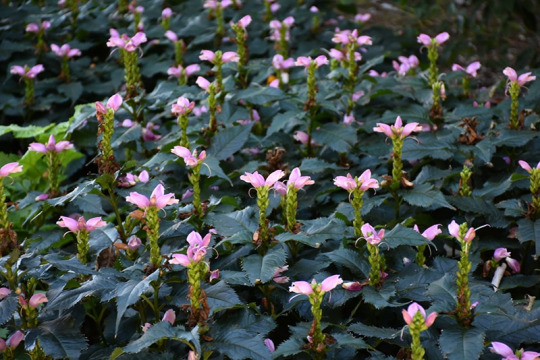
I love these! They also love moist areas so perfect for the wet areas of the lawn you can't mow, and otherwise they will tolerate full sun and shade.
11. Cardinal Flower

A really bright native, This is also a full sun and water loving plant!
12. Wild Ginger

A really great groundcover that has dark red flowers would be another great plant for a witchy/emo garden. This also loves full shade and well drained soils.
13. Partridge Pea

Nice showy leaves and blooms, this is a great plant that loves full sun to part shade, it is also used often for erosion control, so these are the perfect thing to plant for those streambeds.
14. Water Smartweed

If you have a marsh or pond and you want another flowering plant other than a lotus, this would be an amazing addition!
15. Spicebush

If you like forsythia, but you don't want to plant it because it is highly invasive, I recommend this plant.
Plants I did not mention: Coneflowers, wild bergamot, native wild roses (not multiflora), sunflowers of varying species, evening primroses, Squirrel corns, and so many others. I really just picked out some that I liked that I had never heard of or some I thought others would like.
Disclaimers
*I am a geologist who took a lot of environmental classes. I am by no means an expert.*
*This post is a little different from what my posts will probably be in the future, but it aligns with my values and interests*
#cottagecore#cottage aesthetic#cottage witch#flowers#plants#wildflowers#ecofriendly#gardening#environment#pennsylvania#ohio#greenery#native gardens
3 notes
·
View notes
Text
My Garden Flowers Part 5
All photos mine. The blue flax is edited for colour since the camera didn't catch it and washed it out. The curlytop smartweed is edited for contrast and the scarlet bee balm is edited for colour since that phone camera sucked.
























In order of appearance:
121. Whorled Milkweed (Asclepias verticillata) Flowering for the first time this year! I hope she gets pollinated.
122. Blue Flax (Linum lewisii) Finally got this thing to flower. She doesn't live very long and my first two attempts grew just fine but didn't flower and therefore didn't reseed. Here's hoping this one does.
123. Lakeside Daisy (Tetraneuris herbacea) Not pictured as she hasn't flowered yet.
124. Fringed Sagebrush (Artemisia frigida) Took me several tries, including the wrong species sent, before I got one to take off but she survived the winter and is doing nicely this summer!
125. Black-Eyed Susan (Rudbeckia hirta) Sadly she didn't make it through the winter and I'll have to try another area, but she certainly looked nice while she was here.
126. Gray-Headed Coneflower (Ratibida pinnata) Flowering for the first time this year! Also my first successful attempt as BOTH my previous plants were cut where I had them. Two in a fucking row. She doesn't even look that weedy. I don't know what the fuck.
127. Narrow-Leaved Vervain (Verbena simplex) Sadly she didn't survive the winter. Trying her in another place and she seems to like it so far.
128. Pink Evening Primrose (Oenothera speciosa) Well, she certainly understood the assignment to prettify that area, though I had no idea she'd spread so much. My other Oenothera species are much more well-behaved. lol
129. Streamside Fleabane (Erigeron glabellus pubescens) Lovely little thing in the small spot I have her in. An ideal small space plant.
130. Green Comet (Asclepias viridiflora) Now she flowered last year but didn't make pods in spite of all the ants who came to visit. Hoping she'll make pods this year!
131. Spike Goldenrod (Solidago simplex) She looked nice here but didn't survive the winter. I'm trying one in another spot.
132. Prairie Dropseed (Sporobolus heterolepis) Not pictured as I haven't got any pictures yet.
133. Blue Leadplant (Amorpha canescens) Not pictured as she hasn't flowered yet.
134. Clammy Groundcherry (Physalis heterophylla) She also spread much more than I expected, but I don't mind. Potentially lots of ground cherries!
135. White Meadowsweet (Spiraea alba) A bit leggy as a bush, though that might be due to where I have her, but the flowers are yet again white and lacy and loved by pollinators.
136. Curlytop Smartweed (Persicaria lapathifolia) I didn't plant that, and wish I had gotten a better photo of her because she sadly never reseeded until this year, and her daughter is not quite as impressive as she was.
137. Slender Mountain Mint (Pycnanthemum tenuifolium) She is no longer with us as of this year and I'm not sure why. I've planted fireweed in that spot now and we'll see how she does. Maybe I'll plant slender mountain mint in the back instead.
138. Fireweed (Chamaenerion angustifolium) Not pictured as she hasn't flowered yet.
139 Michigan Lily (Lilium michiganense) Every year I end up with more! Springtime flower only and then she fruits.
140. Canada Columbine (Aquilegia canadensis) one of the relatively safe members of the buttercup family. You can pop a flower or two into your mouth for a refreshing sweet snack.
141. Prairie Smoke (Geum triflorum) Probably the most showy of her genus. Avens flowers tend to be small white or yellow on leggy stalks, but prairie smoke has red parts around white flowers that eventually become fluffy seedheads, hence the name. Plus the leaves turn red in the fall so very nice all around.
142. Golden Alexanders (Zizia aurea) She can get leggy in the summer, but the bright yellow flowerheads are nice in spring.
143. Canada Wild Rye (Elymus canadensis) She didn't make the winter. Again I think it was too dry. She may have reseeded, however, or else I've let a clump of crabgrass stay for far too long.
144. Purple Prairie Clover (Dalea purpurea) She's another one I had to get from a Manitoba company because no one in Ontario was selling this species (some do now though). She is thriving!
145. Wild Mint (Mentha arvensis) The area I have her in is fairly dry and blocked by sidewalk. She does occasionally get in the cracks but is otherwise well-behaved in her enclosure. The same cannot be said for the one I gave to my friend for her landlady's plant war. Apparently she's taken over the neighbourhood. Well done, native mint.
146. Scarlet Beebalm (Monarda didyma) She lived well for one year in that area and then never again. I'm trying her in a different spot where she hasn't flowered yet but seems to like it.
147. Purple Coneflower (Echinacea purpurea) That's a cultivar. I did eventually manage to get the wild type, but don't have a picture yet.
148. Canada Garlic (Allium canadense) In my humble opinion these are much tastier than ramps. They usually don't make flowers, opting to make bulbs instead, but this was a nice exception. They're springtime only, though.
149. Annual Fleabane (Erigeron annuus) I rescued her from a fallow area. Sadly she didn't reseed but I don't feel bad because that area is completely under development now and her offspring wouldn't have made it anyway. I gave her a chance.
150. Northern Bedstraw (Galium boreale) Not pictured as she hasn't flowered yet.
#blackswallowtailbutterfly#my photos#photography#my garden#garden flowers#native plant gardening#native flowers of Carolinian Canada and USA#Asclepias verticillata#Linum lewisii#Artemisia frigida#Rudbeckia hirta#Ratibida pinnata#Verbena simplex#Oenothera speciosa#Erigeron glabellus pubescens#Asclepias viridiflora#Solidago simplex#Physalis heterophylla#Spiraea alba#Persicaria lapathifolia#Pycnanthemum tenuifolium#Lilium michiganense#Aquilegia canadensis#Geum triflorum#Zizia aurea#Elymus canadensis#Dalea purpurea#Mentha arvensis#Monarda didyma#Echinacea purpurea
6 notes
·
View notes
Text
Super Bloom 2023?
Here is the Wildflower Update from the US Forest Service dated January 27,2023 in response to the above question.
Will there be a superbloom this year? The short answer- maybe. It is still too early to predict if the storms from the summer 2022 monsoon season will lead to a showy 2023 spring bloom. Generally, superblooms are preceeded by fall/winter rains, which we did not receive. Sprouts of many wildflower species have been seen popping up on alluvial fans, in washes and around Furnace Creek Visitor Center but whether they survive will depend on many factors including wind, additional precipitation and temperature.
Right now we are anticipating an average to above average bloom this year, but it remains to be seen if there will be a full superbloom. See "Predicting a Good Bloom Year" below to learn more.
Predicting a Good Bloom Year
A good wildflower year depends on at least three things:
Well-spaced rainfall throughout the winter and spring
Sufficient warmth from the sun
Lack of drying winds
Rain is Key
Gentle rain that soaks deeply into the soil is essential for a desert floral display. To begin, a rainstorm of a half inch or more is needed to wash the protective coating off wildflower seeds and allow them to sprout. For plants to continue growing, rainstorms must come at evenly-spaced intervals throughout the winter and spring. The best blooms are triggered by an early, winter-type rainstorm in September or October, followed by an El Niño weather pattern that brings above average rainfall to the Desert Southwest.
Warming Things Up
Wildflower seeds that sprout with cool winter storms often remain small and low to the ground until the springtime sun starts to warm the soil. They may not look like they are growing, but a strong root system is developing below the surface. As the temperatures get warmer, the well established plants then put on a growth spurt and start to bloom.
Harsh Desert Wind
Frequent springtime windstorms without additional rain can bring about a quick end to the spring bloom or even prevent it from happening by killing off delicate sprouts. Dry, moving air dehydrates exposed surfaces of all living things, including human beings. Desert plants often have waxy, hairy, or spiny leaves to baffle the wind and retain precious moisture. Humans can carry and drink water as needed, but the wildflowers must grow and bloom before they dry out, or late-spring heat arrives, in order to leave seeds scattered on the desert floor to produce the next generation.
When Wildflowers Typically Bloom
Mid February to Mid April
Where: Lower elevations on alluvial fans and foothills.
Wildflowers: Desert Gold (Geraea canescens), Notch-leaf Phacelia (Phacelia crenulata), Caltha-leaf Phacelia (Phacelia calthifolia), Golden Evening Primrose (Camissonia brevipes), Gravel Ghost (Atrichoseris platyphylla), Bigelow Monkeyflower (Mimulus bigelovii), Desert Five-spot (Eremalche rotundifolia)
Early April to Early May
Where: 3000 to 5000 feet elevations, upper desert slopes, canyons, higher valleys
Wildflowers: Desert Dandelion (Malacothrix glabrata), Brittlebush (Encelia farinosa), Princesplume (Stanleya pinnata), Desert Paintbrush (Castilleja chromosa), Fremont Phacelia (Phacelia fremontii), Mojave Aster (Xyloriza tortifolia), Bigelow's Coreopsis (Coreopsis bigelovii), Indigo Bush (Psorothamnus arborescens), Desert Globemallow (Sphaeralcea ambigua)
Early May to Mid July
Where: 5000 to 11,000 feet elevation on mountain slopes, pinyon pine/juniper woodlands
Wildflowers: Desert Mariposa (Calochortus kennedyi), Purple Sage (Salvia dorrii), Rose Sage (Salvia pachyphylla), Panamint Penstemon (Penstemon floridus austinii), Magnificent Lupine (Lupinus magnificus), Inyo Lupine (Lupinus excubitus)
Fleeting Beauty

NPS / E. Hoerner
Past Wildflower Seasons
2022
Although we received rain in July, it came too early; rain is usually required in the fall to produce a large bloom. This fall was not only dry, but also hot, with above average temperatures in November. However, several rain events in December thoroughly wet the soil, which was good news for wildflowers, leading to an average bloom (not a super bloom) this spring.
3 notes
·
View notes
Note
IF your younger sister/brother being reaped to the hunger games, would you volunteer like Katniss did to replace Primrose?
Yes/No? Why?
If yes, what kind of strategy would you use to win the hunger games?
Thank you 😊
@curiousnonny
hello nonny, you got lucky because i was looking to avoid studying when the notif for this came in so you'll get a quick response.
if my little sister was being reaped into the hunger games i would volunteer, as much as the little shit annoys me, i've been saving her life since we were littler (seriously she almost drowned in a pool once and i was the one that pulled her out, and i was like 6 at the time). I've thought about it and yes i'd for sure give my life for her. She's my baby sister how could I not?
Honestly, my knees have been cracking since i was 13 years old and i run out of breath going up 5 flights of stairs, i would not survive the hunger games, i wouldn't even try i'd be one of those quick and showy blood bath deaths.
2 notes
·
View notes
Text
We've finally had some rain. But while I wasn't feeling the best and couldn't move around so well, we had a heat wave and a few days that were up between 110f and 120f. It's been so hard to keep everything alive- and as you can see, the poor plants have suffered.
We lost all but one stem of the Scarlet Sage (Salvia Splendens). Every one of the Woodland Sages (Salvia Nemorosa) are crying- some worse than others. The (suspected) Pot Marigold is a complete goner. I nearly lost the 'John F. Kennedy' Rose- though hilariously the 'Francis Dubreuil' Rose is doing fantastic in this heat despite being an Old Victorian Rose ... And then the 'Flock of Flamingos' Beardtongue (Penstemon hyb.) screamed at me and all but gave up on life after I fertilized everyone in a last ditch effort to save them right before we finally got the rain ????
We even had a moment where the Tall Verbena (Verbena Bonariensis), 'Angel Wings' Blacurrant Sage (Salvia Microphylla), and both of the Hummingbird Mints (Agastache hyb.) looked like they were going to keel over for a hot second. Thankfully, however, they seem to be enjoying the heat as long as I give them water every now and then.
Next year we're remediating the bed by the deck and pulling out all of the Periwinkle / Vinca in there, and turning it into a bed for the Hummingbird Oasis. So hopefully these issues won't continue.

The 'Showy Pink' Evening Primrose (Oenothera Speciosus) finally looks like it's bouncing back, though. I doubt I'll get any more blooms off it this year- and hopefully it'll survive the winter. But it seems to be getting its spunk back despite everything.
I did lose both of the new pink Lilies I bought this year, however. As well as both of the 'Stargazer' Lilies that I planted. I still have no idea why; they were doing fine until suddenly they were dead out of nowhere. I've literally never had that happen with my Lilies before. But the 'Cherub's Smile' Iris that I planted (in the same pot at the Stargazers!) is still doing good, even though it didn't bloom and its leaves've been eaten by Grasshoppers.
Please don't even get me started on how the front garden looks, and how much work I have to do there next year to get it back into shape. It's been a bad year all around, ha.
3 notes
·
View notes